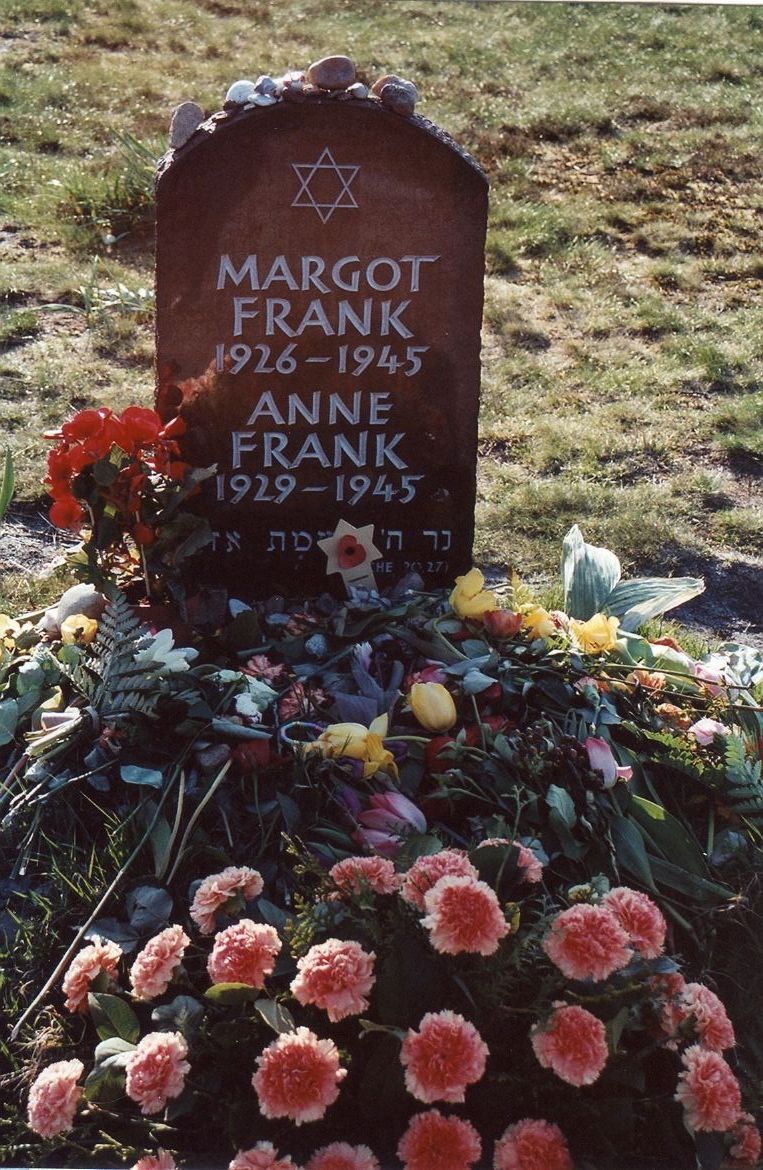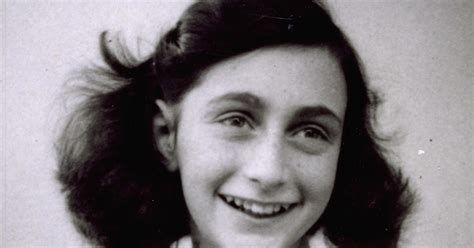Holocaust Diarist. One of the most discussed Jewish victims of the Nazi Holocaust, she is remembered for her wartime diary "The Diary of a Young Girl," in which she gained international fame posthumously after it was published. It documented her experiences hiding during the German occupation of the Netherlands in World War II. Born Anneliese (or Annelies) Marie Frank in Frankfurt, Germany, the youngest daughter of Otto and Edith Frank, her father worked in the family banking business until it collapsed in the early 1930s. In August 1933, she, her parents, and older sister, Margot Frank, moved to Aachen, Germany, in preparation for a final move to Amsterdam, Netherlands. Her father founded a company, Opekta, that sold spices and pectin for use in the manufacture of jam. By May 1940, they were trapped in Amsterdam when German forces invaded and occupied of the Netherlands. As persecution of the Jewish population increased in July 1942, the family went into hiding within concealed rooms behind a wall in the building where her father worked, with three members of the van Pels family and dentist, Fritz Pfeffer. In June 1942, for her 13th birthday, she received a book she had shown her father in a shop window a few days earlier. Although it was an autograph book, bound with red-and-white checkered cloth and with a small lock on the front, she decided she would use it as a diary and began writing in it almost immediately. She continued writing until August 1, 1944, when the German Gestapo discovered them three days later, acting on an anonymous tip. After being interrogated at the local Reich Security Main Office, they were transferred to the Huis van Bewaring (House of Detention) and 2 days later transported to the Westerbork transit camp in the Netherlands. The following month they were deported on what would be the last transport from Westerbork to the Auschwitz concentration camp in Poland. In late October 1944, Anne and her sister were relocated to the Bergen-Belsen concentration camp in northern Germany. In March 1945, a typhus epidemic spread through the camp which claimed the life of her sister, and she died a few days later at the age of 15. Her father survived the Holocaust, the only member of his family to do so. After being released from Auschwitz, he returned to Amsterdam and was given her diary, by Miep Gies, who had assisted in hiding the Franks and the others, and who found the diary after she had returned the following day from being questioned by the German police. He had it published in 1947. In 1952, it was translated from its original Dutch and published in English as "Anne Frank: The Diary of a Young Girl." It has since been translated into many languages and it inspired a Broadway play in 1955, starring Susan Strasberg, and later won a Pulitzer Prize for Drama. It was followed by the 1959 film, "The Diary of Anne Frank" and several television movies. In June 1999, Time Magazine published a special edition titled "Time 100: The Most Important People of the Century," and she was selected as one of the "Heroes & Icons." When her father died in 1980, the original diary, including letters and loose sheets, were willed to the Dutch Institute for War Documentation, who commissioned a forensic study of the diary through the Netherlands Ministry of Justice in 1986. After close examination, they concluded that the diary is authentic, and their findings were published in what has become known as the "Critical Edition" of the diary. Asteroid 5535 Annefrank was named in her honor in 1995, after having been discovered in 1942.
View Cenotaph: Cenotaph Here.
Holocaust Diarist. One of the most discussed Jewish victims of the Nazi Holocaust, she is remembered for her wartime diary "The Diary of a Young Girl," in which she gained international fame posthumously after it was published. It documented her experiences hiding during the German occupation of the Netherlands in World War II. Born Anneliese (or Annelies) Marie Frank in Frankfurt, Germany, the youngest daughter of Otto and Edith Frank, her father worked in the family banking business until it collapsed in the early 1930s. In August 1933, she, her parents, and older sister, Margot Frank, moved to Aachen, Germany, in preparation for a final move to Amsterdam, Netherlands. Her father founded a company, Opekta, that sold spices and pectin for use in the manufacture of jam. By May 1940, they were trapped in Amsterdam when German forces invaded and occupied of the Netherlands. As persecution of the Jewish population increased in July 1942, the family went into hiding within concealed rooms behind a wall in the building where her father worked, with three members of the van Pels family and dentist, Fritz Pfeffer. In June 1942, for her 13th birthday, she received a book she had shown her father in a shop window a few days earlier. Although it was an autograph book, bound with red-and-white checkered cloth and with a small lock on the front, she decided she would use it as a diary and began writing in it almost immediately. She continued writing until August 1, 1944, when the German Gestapo discovered them three days later, acting on an anonymous tip. After being interrogated at the local Reich Security Main Office, they were transferred to the Huis van Bewaring (House of Detention) and 2 days later transported to the Westerbork transit camp in the Netherlands. The following month they were deported on what would be the last transport from Westerbork to the Auschwitz concentration camp in Poland. In late October 1944, Anne and her sister were relocated to the Bergen-Belsen concentration camp in northern Germany. In March 1945, a typhus epidemic spread through the camp which claimed the life of her sister, and she died a few days later at the age of 15. Her father survived the Holocaust, the only member of his family to do so. After being released from Auschwitz, he returned to Amsterdam and was given her diary, by Miep Gies, who had assisted in hiding the Franks and the others, and who found the diary after she had returned the following day from being questioned by the German police. He had it published in 1947. In 1952, it was translated from its original Dutch and published in English as "Anne Frank: The Diary of a Young Girl." It has since been translated into many languages and it inspired a Broadway play in 1955, starring Susan Strasberg, and later won a Pulitzer Prize for Drama. It was followed by the 1959 film, "The Diary of Anne Frank" and several television movies. In June 1999, Time Magazine published a special edition titled "Time 100: The Most Important People of the Century," and she was selected as one of the "Heroes & Icons." When her father died in 1980, the original diary, including letters and loose sheets, were willed to the Dutch Institute for War Documentation, who commissioned a forensic study of the diary through the Netherlands Ministry of Justice in 1986. After close examination, they concluded that the diary is authentic, and their findings were published in what has become known as the "Critical Edition" of the diary. Asteroid 5535 Annefrank was named in her honor in 1995, after having been discovered in 1942.
View Cenotaph: Cenotaph Here.
Bio by: William Bjornstad
Family Members
Other Records
Advertisement
See more Frank memorials in:
Records on Ancestry
Sponsored by Ancestry
Advertisement









